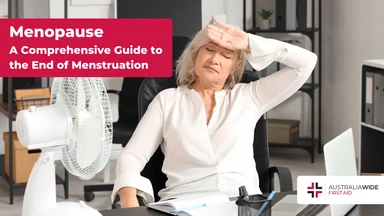Understanding and Managing Different Types of Tooth Damage in Adult and Baby Teeth


A radiant smile is a reflection of good oral health, but an array of factors can lead to tooth damage.
From the seemingly harmless cavity to the more complex gum recession, each type of tooth damage presents distinct challenges.
In this comprehensive article, we will delve into various types of tooth damage, explore their underlying causes, symptoms, and provide effective management strategies for both adult and baby teeth.
Dental caries, commonly known as dental cavities, are the most common form of tooth damage around the world. Around 32% of the adult Australian population is affected by dental cavities.
Dental cavities stem from the interaction between bacteria in the oral cavity and sugars from the foods and beverages we consume. These bacteria produce acids that gradually weaken the tooth enamel, creating cavities.
If left untreated in the early stages the bacteria keep damaging the teeth, ultimately reaching the pulp.
Dental cavities are also the most common reason for tooth loss.
Symptoms: Cavities can exhibit symptoms such as heightened sensitivity, discomfort, pain, and visible pits or discolouration on the affected tooth's surface.Management: Managing cavities involves removing the decayed portion and restoring the tooth's structure with the help of dental filling materials such as composite resins.
For baby teeth, prompt diagnosis and appropriate treatment by a paediatric dentist in Australia is essential to prevent pain and potential complications.
A chipped tooth can occur due to various reasons, including accidents, biting on hard objects, or unintended trauma.
Symptoms: A visually apparent chip in the tooth structure might be visible, accompanied by potential pain or discomfort, especially while consuming hot or cold substances.Management: The management of a chipped tooth typically involves dental bonding for minor chips. In cases of more severe damage, dental crowns may be recommended for adults.
In the case of children, the extent of the chip will determine the most suitable treatment.
Tooth fractures can be attributed to diverse factors, including sudden impact, grinding teeth (bruxism), or even compromised tooth structure due to large fillings.
Symptoms: Fractured teeth can trigger pain during chewing, heightened sensitivity, and visible cracks on the tooth's surface.Management: Effective management for fractured teeth may encompass dental crowns or, in more severe cases, root canal therapy for adults.
In severe cases, the tooth may have to be removed and replaced at a later date with the help of dentures or implants.
The approach for children is similar, focusing on preserving the tooth's integrity to prevent discomfort and potential infections.
Enamel erosion arises when tooth enamel is gradually worn away due to exposure to acidic substances, whether from certain foods and beverages or conditions like acid reflux.
Symptoms: Discoloration, increased tooth sensitivity, and a sense of transparency at the edges of the teeth can indicate enamel erosion.Management: Addressing enamel erosion involves understanding and rectifying the underlying causes. Fluoride treatments might be recommended by dental professionals to strengthen the enamel.
In some cases of extreme destruction, dental bonding and root canal treatment may also be warranted.
This approach applies to both adults and children.
Abrasion refers to the wearing down of tooth structure due to external factors such as aggressive brushing, while attrition is the natural wear caused by the process of biting and chewing.
It can also be a result of bruxism, that is teeth grinding and jaw clenching habits.
Symptoms: Teeth might appear flattened or develop notches near the gum line, particularly in cases of abrasion.Management: For preventing abrasion, practising proper brushing techniques and opting for soft-bristle toothbrushes are essential.
Regular dental visits aid in monitoring and managing attrition for both adults and children.
Cracks in teeth can be attributed to various factors, including trauma, large fillings, or even the pressure exerted during teeth grinding. It can also be a result of age and improper bite.
Symptoms: Symptoms may include discomfort or pain when biting or releasing the bite, intermittent sensitivity, and heightened response to hot or cold stimuli.Management: The management of cracked teeth varies based on the extent of the damage. Possible solutions for adults include dental crowns, root canal therapy, or extraction.
For children, preserving the structural integrity of the tooth through suitable dental procedures is a crucial consideration.
Gum recession can occur due to multiple factors, including aggressive brushing, gum diseases, or the natural aging process.
Symptoms: Visible tooth root exposure, elongated teeth, and increased sensitivity to temperature changes, and pain around the affected tooth.Management: Addressing gum recession involves not only managing the visible effects but also identifying and treating the underlying causes.
Adopting proper oral hygiene practices and scheduling regular dental visits can help prevent further recession.
Surgical procedures might be considered for severe cases in adults.
An understanding of different types of tooth damage is pivotal for maintaining optimal oral health. Timely detection and appropriate management are fundamental to preserving your smile's radiance.
Regular dental check-ups, consistent oral hygiene practices, and seeking professional guidance from a board-certified dentist in Australia when needed ensure that tooth damage is addressed effectively.
This allows you to enjoy the benefits of a healthy and dazzling smile throughout your life.

March 25, 2025
Explore non-traditional paths to sobriety, including mindfulness, yoga, nutritional therapy, and community-based support, for a personalized approach to recovery.

September 7, 2022
Menopause is the final period, when a woman, trans man, or non-binary person assigned female at birth's ovaries run out of eggs and the body can no longer ovulate. Menopause comes with several symptoms, complications, and treatment options.

July 26, 2024
Transcutaneous Electrical Nerve Stimulation (TENS) is a therapeutic method of pain relief. It utilises an electrical device that emits electrical currents and streams the impulses via electrode patches attached to the skin.